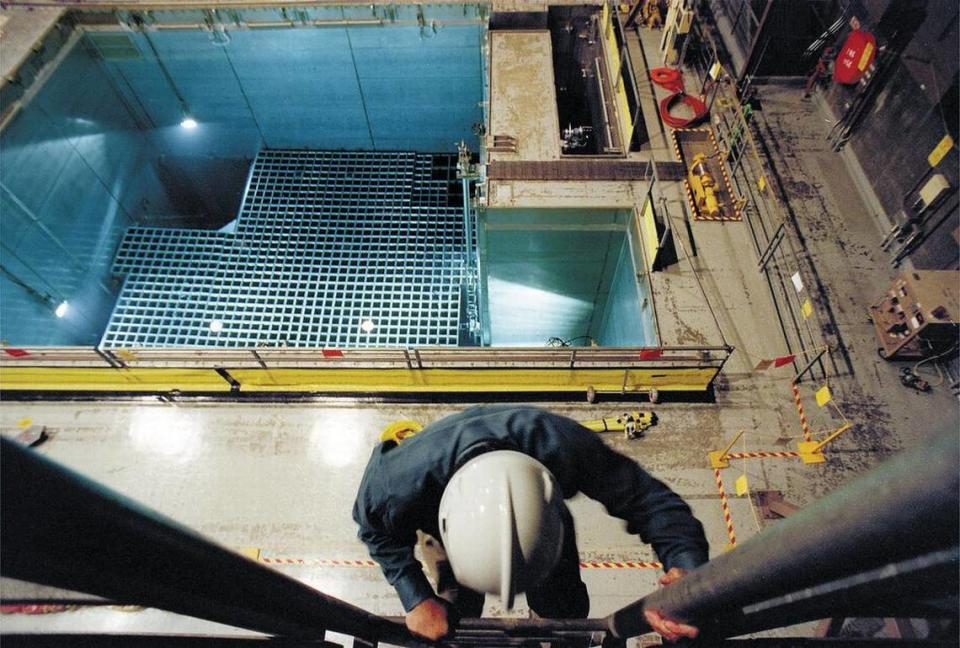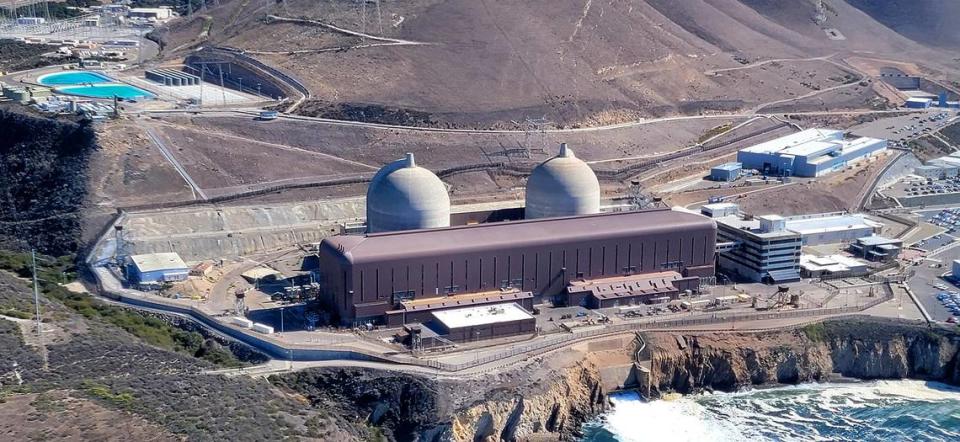PG&E has a new way to store radioactive waste at Diablo Canyon nuclear power plant
PG&E will soon have an additional way it stores casks of new highly radioactive spent fuel from Diablo Canyon nuclear power plant.
Currently, the spent fuel — radioactive waste that remains dangerous for tens of thousands of years after use — is stored in vertical casks mounted on concrete pads at the power plant’s property just north of Avila Beach.
The new system would store the spent fuel in horizontal concrete structures about 25 feet long and 20 feet tall.
PG&E will not move the current vertical spent fuel storage casks. It will begin to store new spent fuel in the horizontal system after it is installed between June 2025 and March 2026.
The new system is more efficient, according to PG&E, because the spent fuel doesn’t need to sit in the storage pools of water on the property nearly as long. In the current storage system, the spent fuel spends about 7 years in the pools before it can be transferred onto the concrete pads for permanent storage.
The horizontal method requires the spent fuel to spend only about 2 years in the water before it is transferred to the dry casks, according to PG&E.

That’s because the horizontal method can store fuel that is essentially hotter than what the current, vertical system could handle, according to PG&E spokesperson Suzanne Hosn.
“Both methods are safe, secure and seismically analyzed and inspected regularly by the Nuclear Regulatory Commission,” Hosn told The Tribune. “The new system allows PG&E to continue to fulfill its obligations to the public and will allow it to decommission the plant more efficiently when the time comes.”
The horizontal system, manufactured by Orano USA, is already licensed by the NRC, Hosn said.
Coastal Commission approves new spent fuel storage system
The California Coastal Commission, which has some oversight of the matter because of its role protecting the coastline from harmful development and activities, considered PG&E’s request to move to the new horizontal spent fuel storage system on Friday.
The commission ultimately approved the new storage system but added a few special conditions to its permit.
For one, those conditions limited its authorization of the spent fuel storage system to 2035. At that time, the commission will re-review the storage system and either continue to permit the spent fuel to be stored on site or perhaps allow PG&E to move the spent fuel to an off-site location approved by the federal government.
The conditions also require PG&E to fund independent reviews of the spent fuel storage program as it ages and conduct ongoing monitoring of the roadways that could be used to eventually transport the spent fuel off site for any impacts from sea level rise.

Public comments support horizontal storage
Public comments during the Coastal Commission’s meeting generally supported the new spent fuel storage method.
However, Mandy Sackett from the Surfrider Foundation spoke about her concerns that the 2035 timeline for the Coastal Commission’s permit was far too long.
“The lack of access to this area is excessive,” Sackett said of the 12-mile exclusion zone that restricts public use of the coast around the Diablo Canyon nuclear power plant.
Her colleague Jim Miers also called on the Coastal Commission to re-evaluate the spent fuel storage system sooner than 2035 so that more of the coastline around the power plant could potentially be opened to the public earlier.
Violet Sage Walker, chairwoman of the Northern Chumash Tribal Council, also commented during the meeting to raise concerns about how the entire Diablo Canyon property is permitted.
“Tribes have lost access and opportunities here,” she said. “We have an obligation to look to the future. ... We want a more holistic approach to this area.”
Walker said the Diablo Canyon site appeared to have a piecemeal permitting approach, and she encouraged the Coastal Commission to ensure the permitting of the spent fuel storage system through 2035 does not impede future public access to the site.



